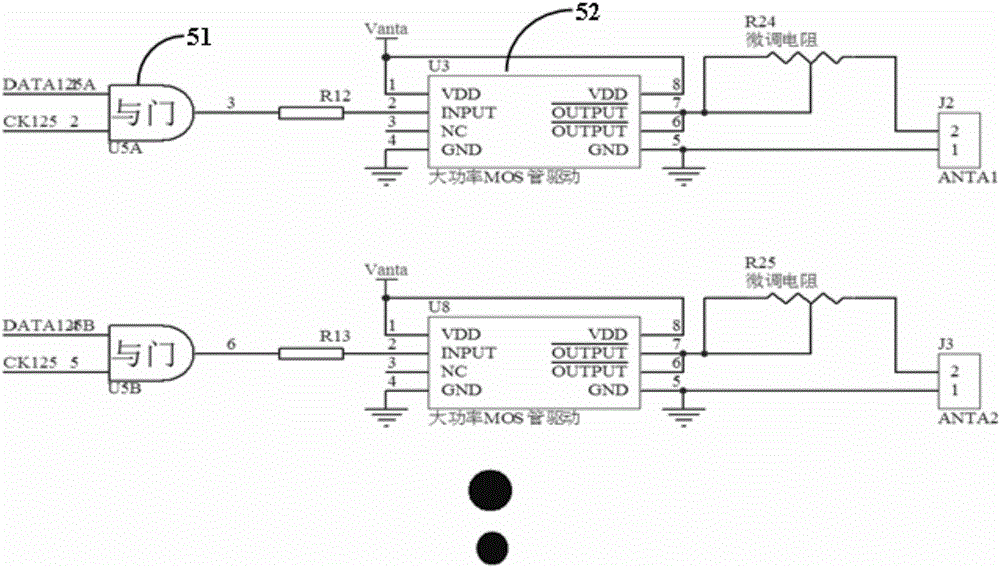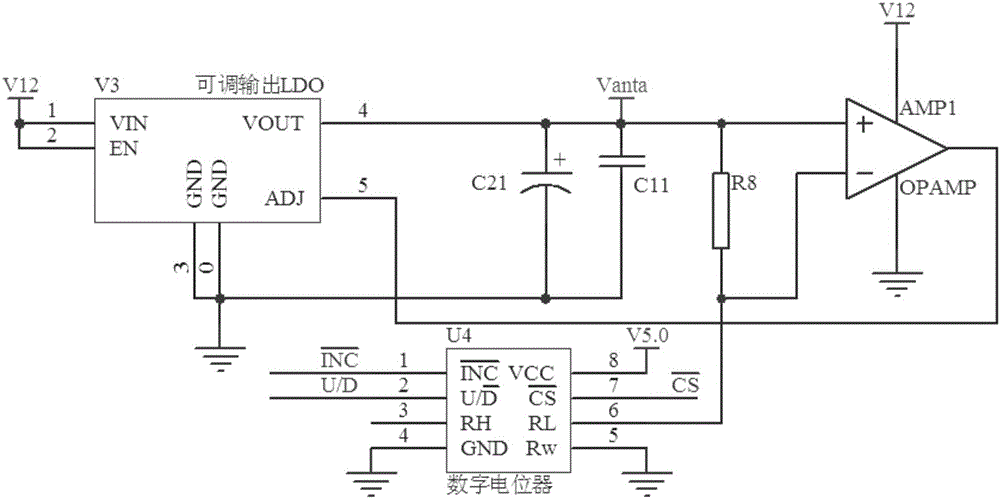Radio frequency tag identification system based on multiple antennas
A radio frequency tag and identification system technology, applied in the field of radio frequency identification, can solve problems such as instability and small signal coverage, and achieve the effects of extending service life, wide signal coverage and precise positioning
- Summary
- Abstract
- Description
- Claims
- Application Information
AI Technical Summary
Problems solved by technology
Method used
Image
Examples
Embodiment
[0049] Embodiment: A radio frequency tag identification system based on multiple antennas, including an antenna activation source 1, a dual-frequency radio frequency electronic tag 2 and a card reader 3, and the antenna activation source 1 transmits a low-frequency activation signal according to a set working mode, so The dual-frequency radio frequency electronic tag 2 receives the low-frequency activation signal and analyzes the low-frequency activation signal, then adds the strength identification signal and the ID number information of the electronic tag to modulate it into a high-frequency coded signal, and the card reader 3 receives the high-frequency coded signal;
[0050] The antenna activation source 1 includes: a memory 4 for storing each low-frequency antenna ID code and the antenna activation source ID code;
[0051] Low-frequency radio frequency circuit 5 and several low-frequency antennas 6 connected with low-frequency radio frequency circuit 5, described low-frequ...
PUM
 Login to View More
Login to View More Abstract
Description
Claims
Application Information
 Login to View More
Login to View More - R&D
- Intellectual Property
- Life Sciences
- Materials
- Tech Scout
- Unparalleled Data Quality
- Higher Quality Content
- 60% Fewer Hallucinations
Browse by: Latest US Patents, China's latest patents, Technical Efficacy Thesaurus, Application Domain, Technology Topic, Popular Technical Reports.
© 2025 PatSnap. All rights reserved.Legal|Privacy policy|Modern Slavery Act Transparency Statement|Sitemap|About US| Contact US: help@patsnap.com



